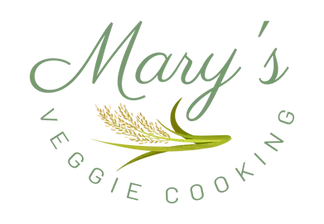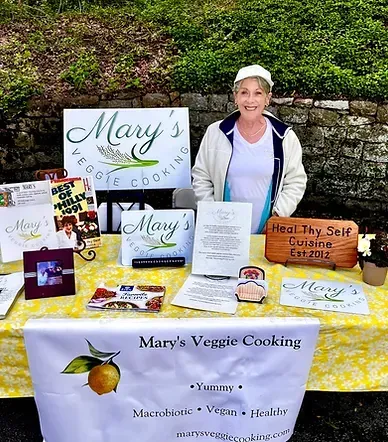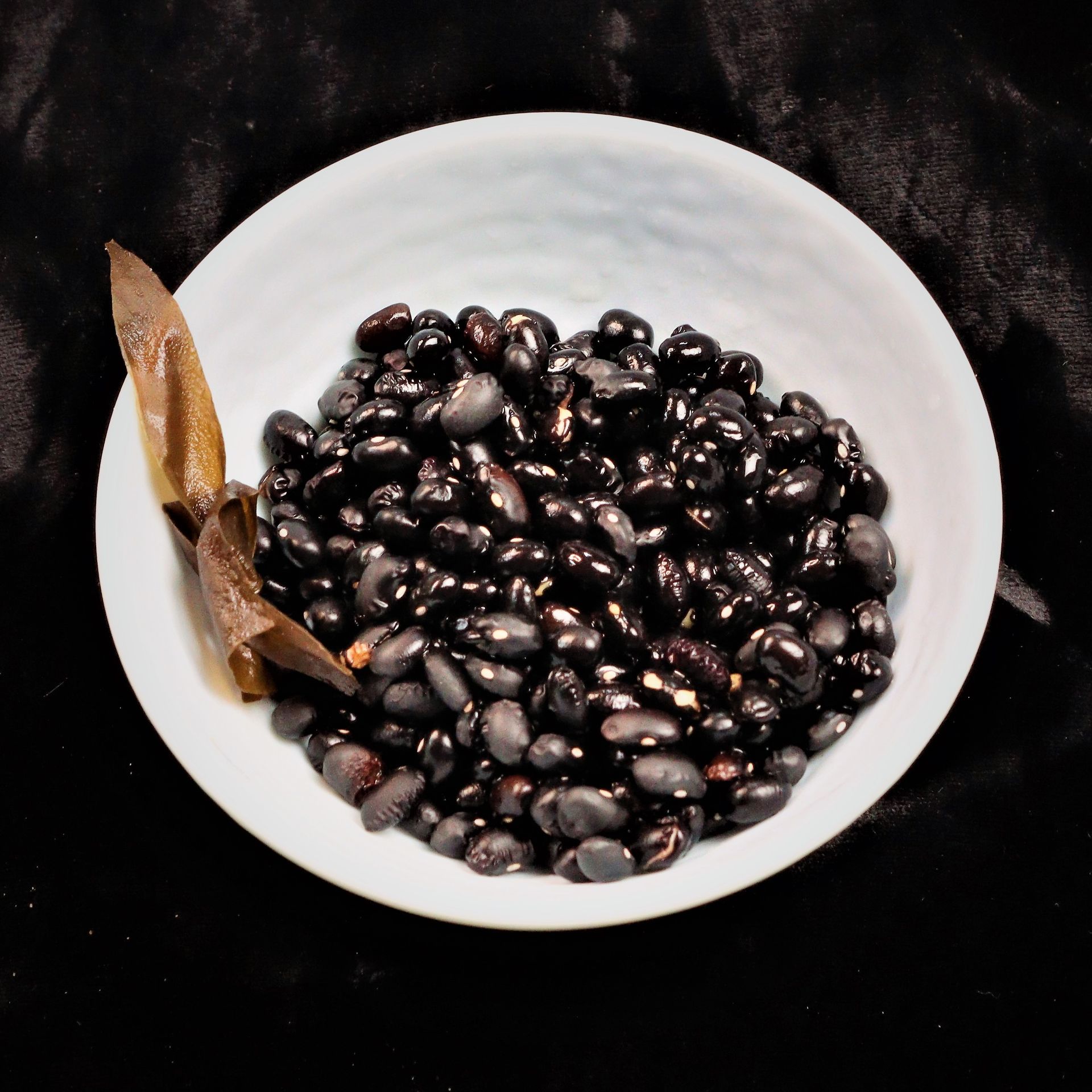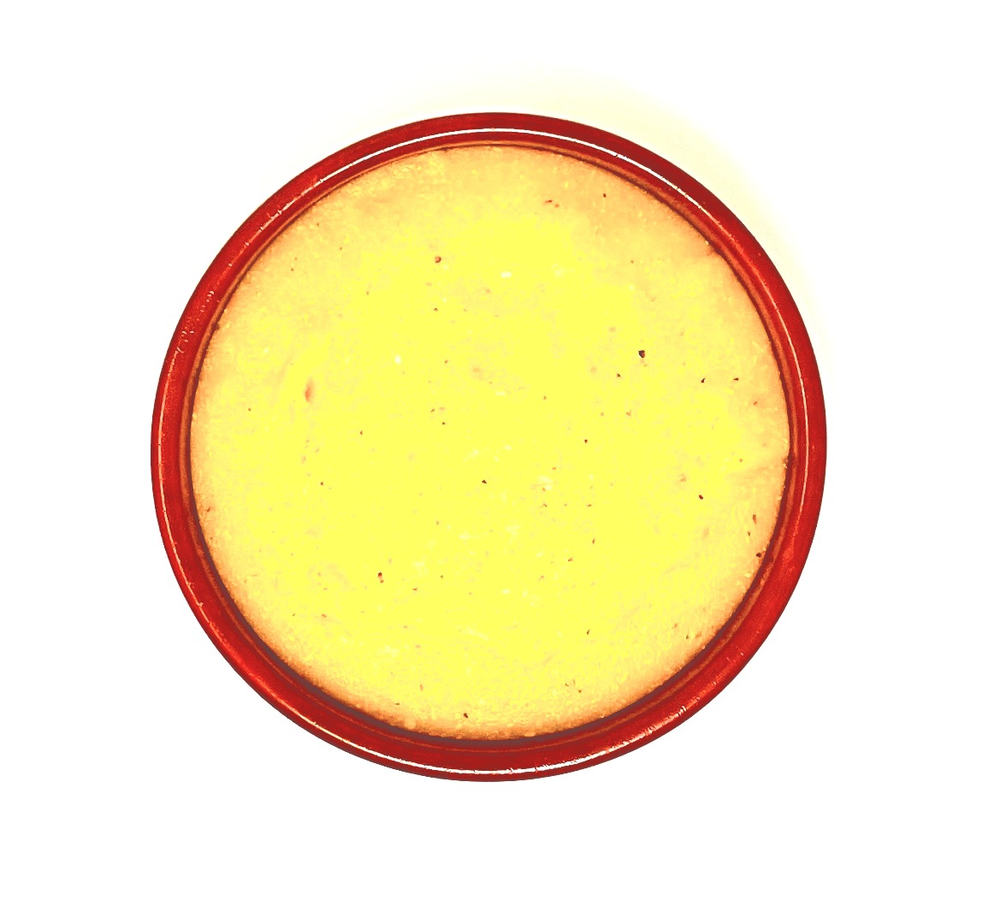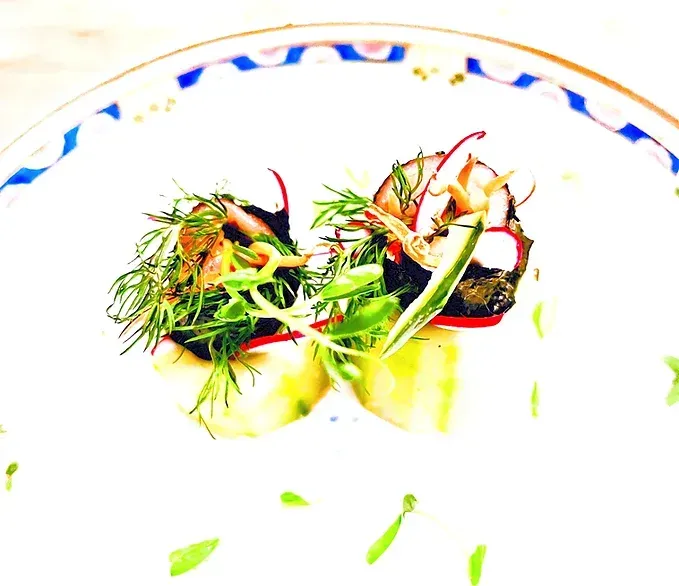"How to Create a Creamy Vegan Corn Chowder Using Fresh Corn Off the Cob"
Mary McCabe • September 12, 2022
Here's a beautiful way to use fresh corn when it is available in the summer. When eight ears of fresh corn are sold for $2.00, it's time to produce creative ways to use them. With the summer ending and the season beginning to change, this is a great soup to enjoy on those rainy fall days.
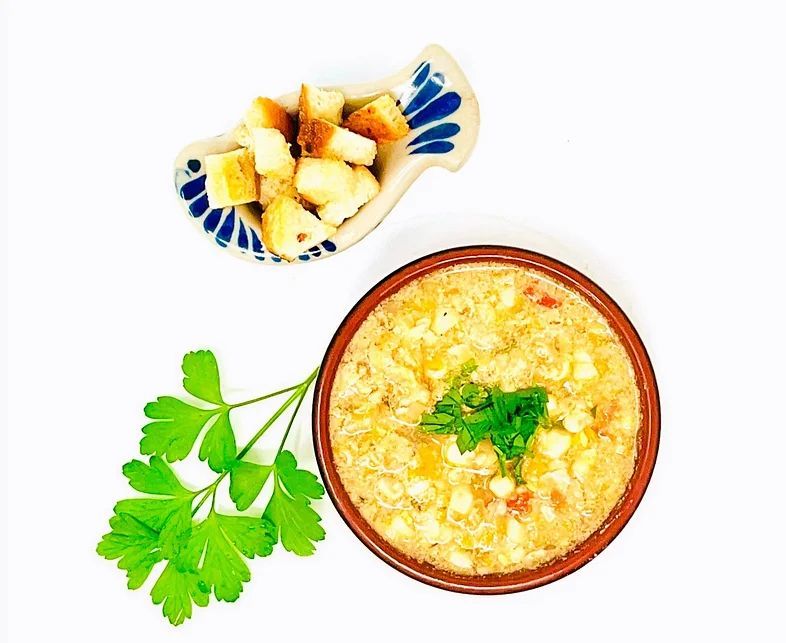
Ingredients
- Six cups water
- Four ears of corn with husk
- One-half whole onion diced
- One cup celery diced
- Two carrots diced (peel if needed)
- One cup soymilk
- One tsp. sea salt
- One Tbsp. white miso
- One tsp. non-toasted sesame oil
- One tsp. soy sauce
- Parsley, scallion garnish
- Fresh and dried thyme for taste
- Six baby tomatoes chopped
- Toasted croutons (optional) Recipe follows.
Preparation
- Wash whole ears of corn and remove outer husks leaving the inner ones that are clean. Cut off both ends.
- Bring water and whole corn to a boil—cover and cook for 15 minutes.
- Remove corn from stock water and skim or strain any silk left in the pot.
- When cooled, remove the husks, and discard them, hopefully to compost.
- Cut off the corn from the cob. Set it aside.
- Warm up a heavy pan, such as cast iron. Add the oil and diced onion with a dash of sea salt. When the onion turns transparent, add diced celery and carrot.
- Simmer together until tender. Add the vegetables to the corn stock. Spoon some of the stock onto the sauté pan to get all the remaining goodness and pour it into the soup pot.
- Add sea salt, tomatoes, and corn. Cook on medium-low for 20 minutes. Add soy milk. Melt the miso with a bit of stock to add and soy sauce to taste. Add fresh and or dried thyme. Simmer for another few minutes, do not boil at this stage to keep the enzymes alive in the miso and soy sauce.
- Add chopped parsley and scallion to garnish. When adding croutons, do it before serving to keep their crispness.
This chowder can be kept well in the fridge, ensuring it is cooled. You can also add potatoes for a truer chowder, preferably organic. To make it creamier, blend part of it with an immersion blender.
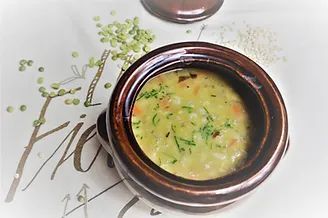
Ingredients Half cup dried whole barley One cup split pea One inch piece Kombu Two carrots diced Three stalks of celery diced One onion diced Eight cups water (approximately) One bay leaf 1 1/2 tsp. Sea Salt Soy sauce seasoning to taste Thyme, parsley, chives, scallions, parsley, and celery leaves your choice, try all, they make great flavor and nutrients.
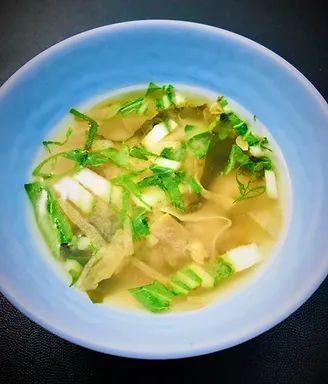
Preparation Bring the water and kombu to a slow boil, remove kombu, set aside for later use. Add onions, allow to become transparent, add tofu, when tofu floats to the top, add wakame and mushrooms. Ladle some broth into a cup with the miso to soften, lower the flame to a simmer, add the melted miso. Do not boil miso, since miso is a live food, boiling will kill the microorganisms contained in the life of the miso. When the broth begins to move in a waving motion, 3 to 5 minutes turn it off and serve with the fresh scallions on top. This soup does not take long to make. It will keep in the fridge if leftover, but best served right away.
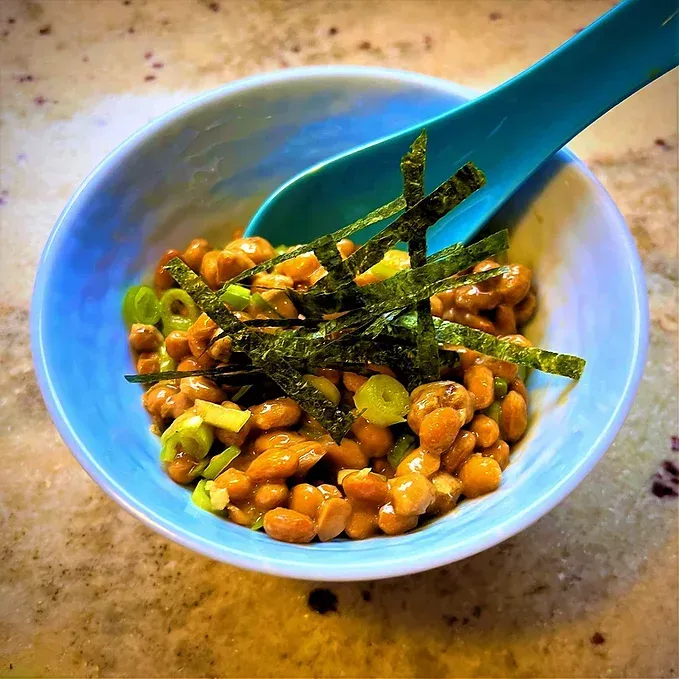
Natto is made from cooked whole soybeans that have been fermented with koji spores. Once it is prepared, there is no need for further cooking. It is usually served as a side dish as an accompaniment with grains and noodles. It can be prepared by stirring it to bring out the stickiness, then adding different flavors, such as soy sauce, grated fresh ginger, daikon radish, jinenjo mountain potato, mustard, horse radish, chives, scallions, nori slivers, and other seasonings. It can be made at home with a bit of preparation and can be purchased in Asian markets or online. I find it is difficult to find Natto made with organic soybeans, so I am going to attempt to make it at home. I ordered the Kawashima Natto Starter Powder through Amazon, will update when I do it. I made it years ago with Sensei Muramoto, and remember that it was very different and more delicious than the frozen packages available. Natto has a distinctive smell and flavor that people either love it or hate it. I have heard that people who eat a lot of dairy do not like it, I am not sure how true that is. The benefits to enjoying Natto are enormous. It is a super nutritious food. It is originated in Japan, where the cooked soybeans were wrapped in rice straw which naturally had the bacillus subtillis bacteria on its surface. This allowed the sugar in the beans to ferment creating Natto. Soybeans are a very hard bean. It takes a long time to cook them. Soybeans are a very important part of the vegetarian diet because they are a one of the highest quality sources of plant based protein, vitamins, minerals and isoflavones. They do contain anti-nutrients such as lectins, however, it has been studied that fermentation reduces the content by 95%.
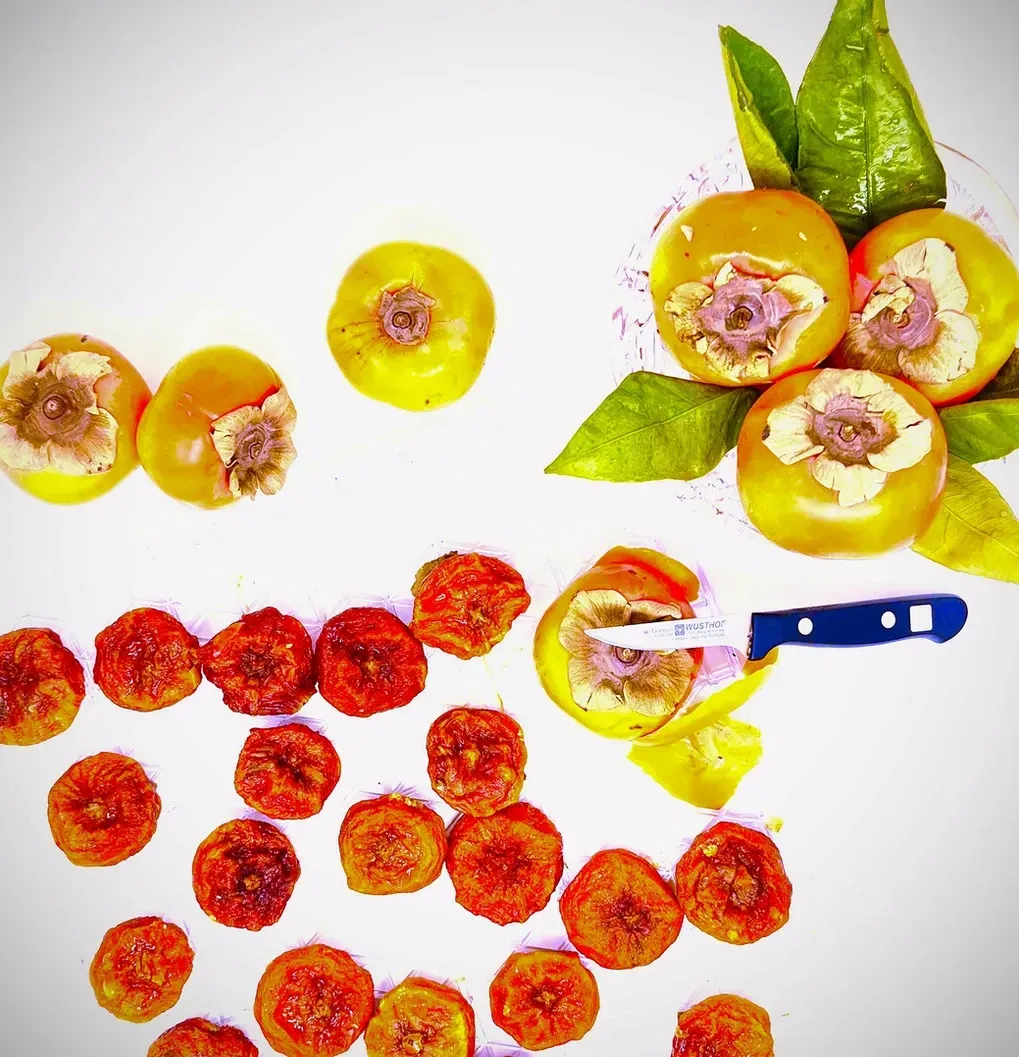
When I lived in Southern California, studying with Sensei Muramoto, we made dried persimmons. We would get cases of them. It was early winter and he had a wood burning stove, since it would get chilly. He built what appeared to be a makeshift fort to dry the peeled persimmons. He used grass mats and built them all around the wood burning stove. We would sit for hours peeling them. He took great pride in being able to peel the whole fruit with one long peel. I never could do it. Every day, he would turn them. When they began to be more dry, he would press them slightly in the middle. It took several weeks before they were ready. In the morning, we would slice them in slivers and serve them with green tea. It was the most delightful combination. He said it created a seventh taste. After I moved back to Philadelphia, we remained good friends. Every year, he would send me a big box of dried persimmons for Christmas. And every year, I would send him a wool vest with leather buttons from Lord & Taylor. My children and I loved them. His persimmons were the most beautiful, they would have a natural sugary coating and beautiful texture and sweetness. His hands had golden microbes. Every food he touched blossomed into it's most highest potential. There is no real recipe to creating dried persimmons. Buy fresh persimmons not too ripe. Wash and then carefully peel the skin off, leaving as much fruit as possible. Set them out on a clean straw mat or something that would be makeshift. The area should be warm, near a wood burning stove. Make sure they don't touch each other. With clean dry hands, turn them each day. When they begin to crystalize on the outside, press the center slightly. When they are completely dried yet tender, store them in a dry air paper box, like cardboard, with wax or parchment paper to store. I would slice them and best serve with green tea.
